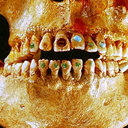Anticonvulsant Activity of Hydroalcoholic Extract and Aqueous Fraction of Ebenus stellata in Mice.
Ключавыя словы
Рэферат
OBJECTIVE
Fabaceae is the third largest family of flowering plants. Lack of essential oils in the plants of this family can be considered as an advantage and can favor them in search for safe and antiepileptic medicines. The effects of Fabacea family plants including Ebenus stellata (E. stellata), Sophora alopecuroides and Caesalpinia gilliiesii were evaluated in pentylenetetrazole (PTZ) and maximal electroshock (MES) seizure tests.
METHODS
The hydroalcoholic extracts were obtained by percolation of 100 g aerial parts of each plant in 900 ml ethanol 80%. Acute toxicity of the extracts was assessed. Non-toxic doses of the extracts were injected to the mice intraperitoneally (i.p.) and occurrence of clonic seizures induced by PTZ (60 mg/kg, i.p.) or tonic seizures induced by MES (50 mA, 50 Hz, 1 sec), were monitored up to 30 min after each administration. The anticonvulsant extract was then fractionated by dichloromethane and water. Phytochemical screening of the effective extract was also carried out by thin layer chromatography to verify active constituents.
RESULTS
Among the extracts used, only E. stellata had no toxicity and inhibited clonic seizures in a significant and dose-dependent (3-7 g/kg) manner with ED50 of 4 g/kg. Fractionation of the extract resulted in dose-dependent (1-5 g/kg) anticonvulsant activity, which was observed in aqueous fraction with ED50 of 1.74 g/kg. Phytochemical screening revealed the presence of terpens/sterols, alkaloids, flavonoids, tannin and saponins in the extract.
CONCLUSIONS
The presence of anticonvulsant compounds in E. stellata suggests further activity-guided fractionation and analytical studies to find the potential of this plant as a source of anticonvulsant agents.


